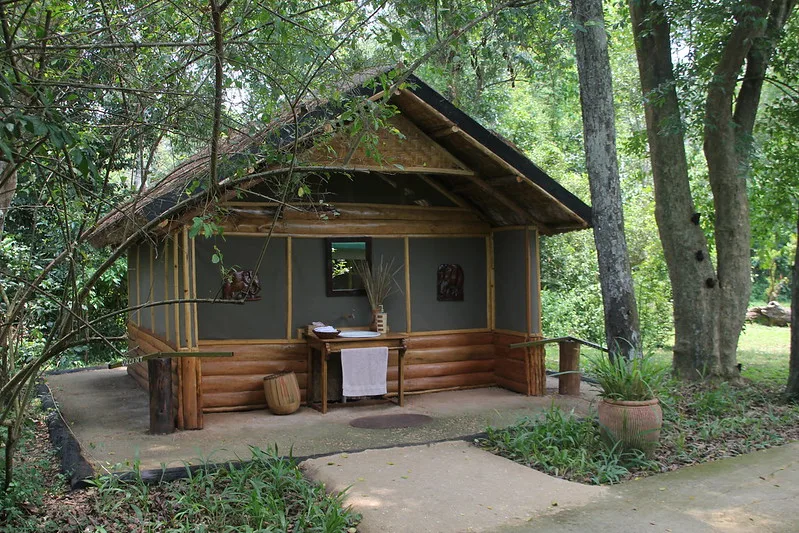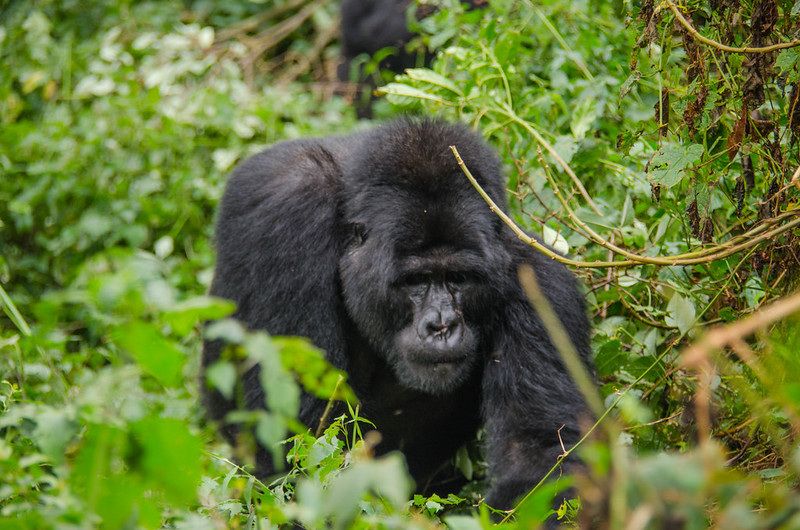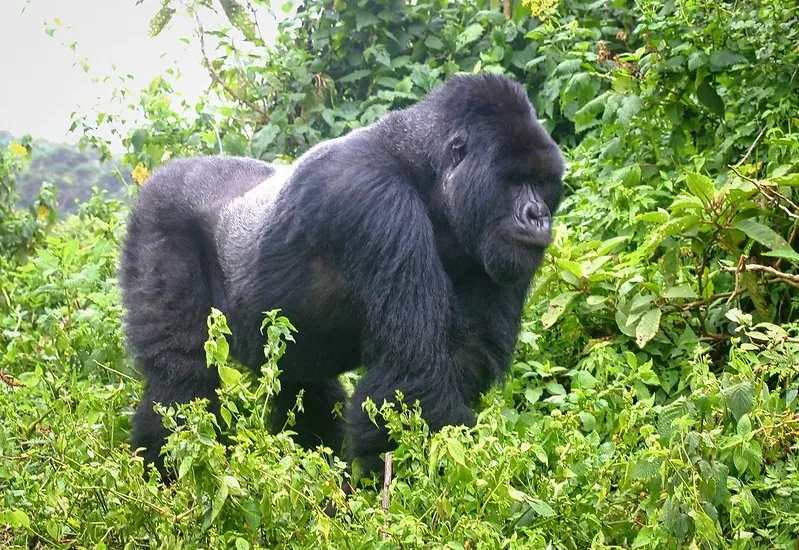Vous êtes bienvenus, aventuriers courageux, dans les merveilles sauvages de l'Ouganda, où l'appel de la…
The Batwa culture and way of life are revealed!
The drive through the misty woods of the Virunga ecosystem takes you to Bwindi Impenetrable National Park, the only spot in the country where Mountain Gorillas can be found because they are indigenous to that area. Bwindi shares the Albertine Rift’s high levels of endemism, and if diversity is gold, there are lots of gold mines in the region! The biologically varied region is home to 459 mountain gorillas, 120 animals, 348 bird species, 220 butterfly species, 27 frog, chameleon, and geckos species, and numerous endangered species, including many monkey species. All of this money has encouraged numerous daring activities and excursions, to the point that one should simply take the gloves off and begin the adventure strategically! Humans, such as the Batwa, are a part of this variety.

Exuberance easily replaces anticipation in this environment, leaving you stunned, satisfied, and yet wanting more! You get to negotiate a minefield of diverse experiences while learning, gaining prizes from both nature and pleasure! In the light of day, you will clearly appreciate all sort of species, environment, and genetic diversity. From the standpoint of species variety, you will charge into the thick forests to feed your eyes and mind with the finest that an African forest has to offer. Gorilla trekking is the ultimate display and the most defined action in the field of all your forest adventures. It allows you to see for yourself the hidden wonders of the Virunga mountains.
However, no adventure in this area is complete without a visit to the surrounding communities! This excursion puts to the test the assumption that cultural variety is a stunning model of a great land, and it reveals the amazing countrymen who punctuate the protected areas’ fringes and bounds! In Bwindi, you can see culture at work since the preservation of legacy and custom is common in this region of the world. The Bakiga and Batwa communities are the most regularly found tribal societies and tribes, with the others following closely in small numbers. Some have described a visit to the Batwa as one of their most famous and unforgettable experiences while in Bwindi.They were at a loss for words at the interaction of discovery and desire within the learning platter of a wild atmosphere, which was burning with the enchantment of individuality.
The scent of civilization in the woods.
The Batwa are groups of people who used to live in the woodlands that surround the park. They are one of the most unusual villages in the area. The Batwa are the indigenous rain forest dwellers who became conservation refugees after being evicted from their customary hunting and gathering areas. For almost 500,000 years, these people had no other option than to live in the forest, where they hunted and collected. Their style of existence prohibited farming, forest degradation, charcoal production, and the construction of dwellings. Their primary source of food, medicine, and clothes was the forest. They just coexisted with their beloved woods and animals, including Mountain Gorillas, and left a small ecological imprint in their wake.
However, life for the Batwa People altered dramatically in 1991, when the Mgahinga Gorilla National Park and Bwindi Impenetrable Forest were formed to conserve the woods and animals, particularly Mountain Gorillas and other (non-human) primates. This was done at the request of environmentalists and the government. As a result, the Batwa became conservation refugees in a world that was foreign to them. Because their talents and methods of livelihood were no longer valuable in this contemporary world, they physically began to suffer. Currently, the bulk of them live as squatters in villages surrounding the forests, eventually becoming jacks of all trades.
Some of them engage in small-scale subsistence farming and provide inexpensive labor as a means of earning food, the two of which are the ways by which they now show their masculinity as they bring “bread” back home. Others make sculptures for sale, practice small-scale agriculture, and engage in cultural tourism. All of them serve as sources of revenue, designed to improve the Batwa’s standard of living.
As of today, the Batwa are mostly found in the districts of Kisoro, Kabale, Kanungu, Bundibigyo, Mbarara, Ntungamo, Lwengo, and Mubende, among others.
The wisdom of the Batwa people described by Uganda’s wise men
If you’ve read about the Amazon jungle’s Yonomami and Akuntsu, you’re probably familiar with the manner of life of these former forest dwellers in Southwestern Uganda. However, I’m tempted to assume that even the Akuntsu, who share many similarities with the Batwa, will eventually wonder at the Batwas’ brilliance. This is owing to the Batwa’s high degree of resiliency and rapid acceptance of contemporary civilisation.
The Batwa, as previously said, were evicted from the forest in the 1990s, which appeared to be the ultimate blow to the already-endangered group. What’s especially interesting is how fast they blended their basic way of life with the one they discovered outdoors. One of the astounding aspects of their brilliance is that, despite having lived in the jungle for so long, they came out and learned other languages in the shortest amount of time possible and continued to thrive! This is surely what makes their dynamic way of living mysterious.
“We’re done; God must be displeased,” the Batwas said!
If one is familiar with ancient history, one would notice that calamity is invariably linked to the fact that the gods were irritated at the time. There was once a belief that earthquakes were generated by restless gods or huge animals dormant under the Earth. Such beliefs among the Batwa are nothing new. The Batwa were deeply religious people who were not spared by a religion system based on Greek mythology.
They saw their eviction from the forest as a total loss, with their game being relocated from calm to unknown seas. This was seen as an example of how their opponents (in this case, environmentalists) would always lure them into a deep dark forest where 2+2=5, and the route going out was only wide enough for one. This meant that they felt persecuted, condemned, and denied their rights to free expression and opinion, but the government and environmentalists were portrayed as happy. When they tell their creation myth, their anguish becomes more evident.
The Batwa Creation Story
The Batwa have their own origin tale in which the creator gives some people height and others lucrative land, but when he arrives at the Batwa, there are no more such gifts, so he gives them the Rainforest. When the government evicted them in the 1990s, they believed God had rejected them!
The cultural experience of the Batwa.
The Batwa cultural experience was therefore established by the displaced Batwa, with pragmatic attempts of teaching their children as well as revealing to the world their undeniable history, customs, and all-seasons tale. The colorful experience takes place outside the park in a strategic old-growth forest in a rather big tree canopy-roofed courtyard, just outside the Bwindi Impenetrable Forest. The Batwa experience begins with a nature walk, which involves a journey through the forest while seeing things in a whole new light.
One may experience the tranquility of ancient Batwa village life by visiting a traditional Batwa farmhouse and learning from the ladies how to prepare, cook, and serve a traditional dinner. You will also be able to try the prepared delicacies, speak with a medicine man, and learn about the therapeutic virtues of the wild flora. Hear traditional tunes and old stories. You’ll also learn how they hunted the small animals they needed for sustenance, what they collected, and how they used their primitive tools and materials in novel ways.
The Batwa tour will also show you how comfortably they lived in tree-houses, caves, and grass huts. The Batwa engage in a variety of activities, including dancing. When visitors come to their village, they enthusiastically use all of their abilities to amuse them. This is evident in the way they sweetly dance and sing while masterfully extracting magnificent beautiful sounds from their cultural instruments, to which the dancing bodies respond.
Consider going.
By visiting the Batwa, you are assisting in the preservation of these people, customs, and culture. You are also providing cash, infrastructure, and assistance to the forest’s forgotten and misunderstood first people.


